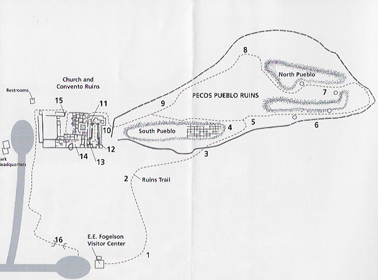"Duration: Annual
Nativity: Native
Lifeform: Forb/Herb
General: Small annual herbs, 5-15 cm tall, from a thin taproot; stems several to many, erect to spreading from base; herbage hirsute to hispid.
Leaves: Basally clustered and alternate on the stems, sessile; blades oblanceolate, 2-3 cm long, obtuse or rounded at the tip, bristly with pustulate hairs.
Flowers: White, in dense scorpioid spikes that elongate with maturity; spikes bractless or with a few bracts at base; calyx 6-7 mm long in fruit, generally asymmetrical, the lobes linear-lanceolate, midrib prominently thickened; corolla white, funnelform, 2 mm long, the limb 2.5 mm wide with rounded lobes.
Fruits: Nutlets usually 4, heteromorphic with one nutlet larger than the others; odd nutlet 2 mm long, finely granulate-muricate; the other nutlets 1-2 mm long, coarsely tuberculate; style about the same length as the odd nutlet.
Ecology: Found in dry soils, slopes, plains, often in grasslands, from 4,000-6,500 ft (1219-1981 m); flowers May-July.
Distribution: UT, AZ, CO, NM, KA, TX, w OK; south to the northern border of MEX.
Notes: Cryptantha is a genus of bristly herbs with white or yellow flowers in spikes that are usually 1-sided and curling like a scorpion-s tail (-scorpioid-). Cryptanthas are notoriously difficult to ID without mature fruit (called -nutlets- in this group). At first glance, this species stands out as a shorter, more stumpy Cryptantha, with thicker leaves. Confirm with the nutlets: 4 nutlets per calyx, with one larger than the other 3 (2 mm versus 1.5 mm), all with tubercles and rounded edges; the style is about the same length as the 3 shorter nutlets. The sepals also develop a thick, hardened central ridge as they mature. Ours is var. elechanta and differs from the other variety by its much smaller corolla, with a limb less than 3 mm wide. As nutlets tiny and difficult to examine in the field with a hand lens, it is usually necessary to make a collection of mature material for identification under a dissecting scope.
Ethnobotany: Used externally for boils, for itching, and for fatigue when applied as a hot infusion; considered a poisonous weed.
Synonyms: Cryptantha dicarpa, Eritrichium crassisepalum, Krynitzkia crassisepala
Editor: SBuckley 2010, FSCoburn 2015, AHazelton 2015"
(SEINet)


